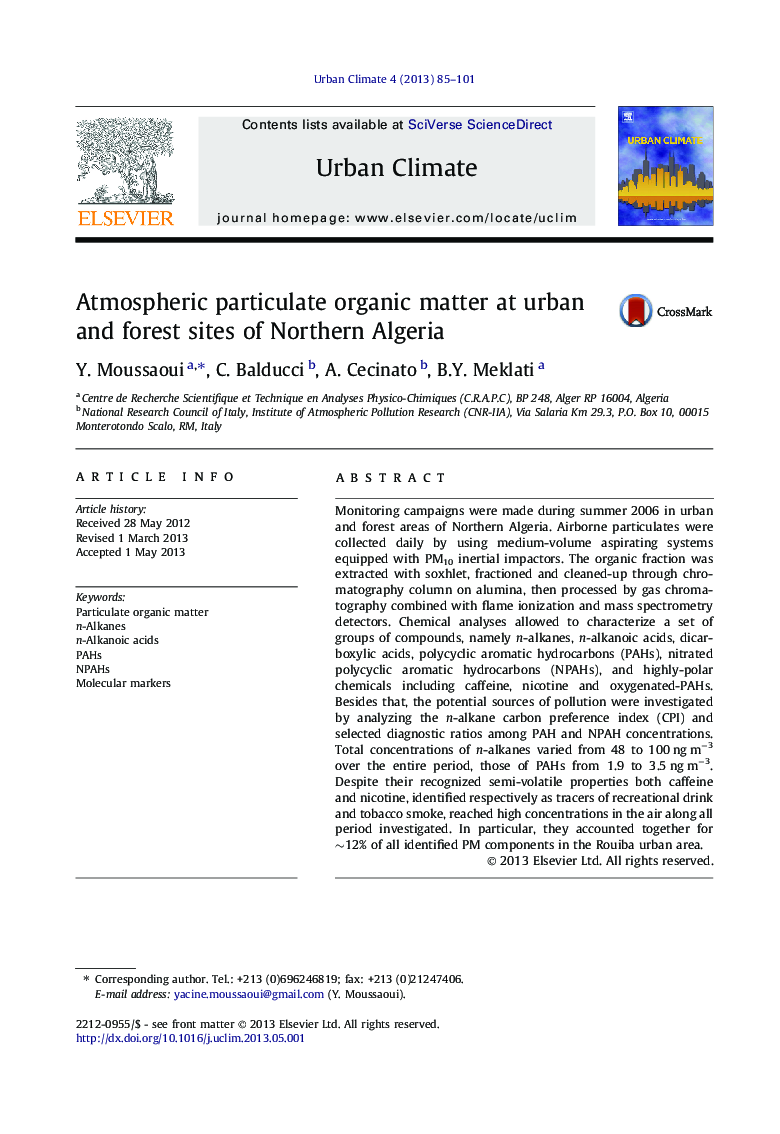| Article ID | Journal | Published Year | Pages | File Type |
|---|---|---|---|---|
| 143805 | Urban Climate | 2013 | 17 Pages |
•93 chemical compounds were quantified in the solvent extractable organic matter.•The CPI and PAH diagnostic ratio demonstrated the influence of anthropogenic source.•Motor vehicle and industrial emission were identified as the main pollution sources.•High concentrations of nicotine and caffeine in the air particles were recorded.
Monitoring campaigns were made during summer 2006 in urban and forest areas of Northern Algeria. Airborne particulates were collected daily by using medium-volume aspirating systems equipped with PM10 inertial impactors. The organic fraction was extracted with soxhlet, fractioned and cleaned-up through chromatography column on alumina, then processed by gas chromatography combined with flame ionization and mass spectrometry detectors. Chemical analyses allowed to characterize a set of groups of compounds, namely n-alkanes, n-alkanoic acids, dicarboxylic acids, polycyclic aromatic hydrocarbons (PAHs), nitrated polycyclic aromatic hydrocarbons (NPAHs), and highly-polar chemicals including caffeine, nicotine and oxygenated-PAHs. Besides that, the potential sources of pollution were investigated by analyzing the n-alkane carbon preference index (CPI) and selected diagnostic ratios among PAH and NPAH concentrations. Total concentrations of n-alkanes varied from 48 to 100 ng m−3 over the entire period, those of PAHs from 1.9 to 3.5 ng m−3. Despite their recognized semi-volatile properties both caffeine and nicotine, identified respectively as tracers of recreational drink and tobacco smoke, reached high concentrations in the air along all period investigated. In particular, they accounted together for ∼12% of all identified PM components in the Rouiba urban area.
